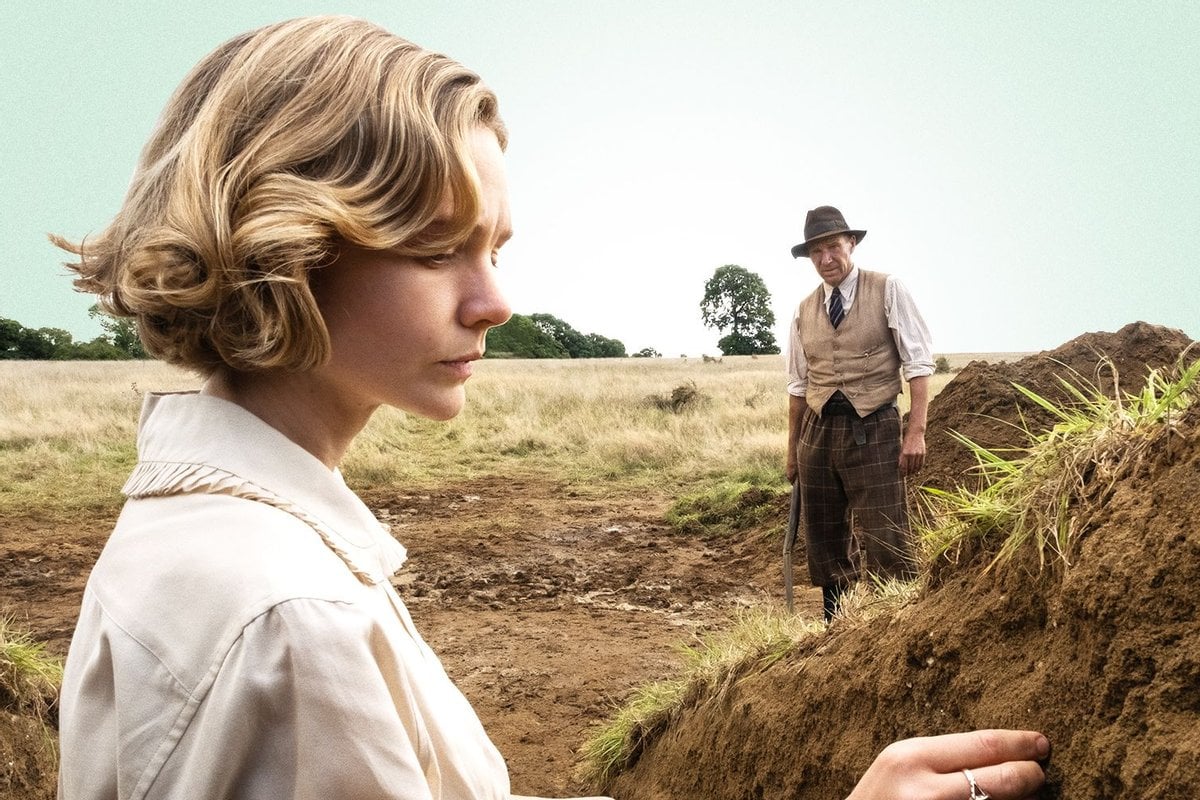
Netflix's new film, The Dig, has been described as Downton Abbey meets Indiana Jones.
It features everything we love in a good period drama - a rich widow, an impending war, and a mysterious graveyard.
What makes it even more watchable is the fact it's based on a true story.
The film, which was directed by Simon Stone, is based on John Preston's 2007 novel of the same name which is based on the real-life story of the greatest archaeological find in British history.
Watch the trailer for Netflix's The Dig. Post continues below.
Over 1400 years ago, the Anglo-Saxons hauled their 80-foot wooden ship into a field in Suffolk, on the east coast of England. Inside a chamber in the middle of the ship, they placed the body of their King, and surrounded it with precious gems, weapons, gold jewellery and coins.
It would remain there for 1300 years.
In 1939, with the threat of World War II looming, widow Edith Pretty (played by Carey Mulligan) hired archeologist Basil Brown (Ralph Fiennes) to excavate the mysterious mounds on her Sutton Hoo estate in southeast Suffolk.
Edith was born Edith Dempster in 1883 to a wealthy manufacturing family. She later married Frank Pretty after he proposed to her 15 times, and the couple purchased the Sutton Hoo estate together.